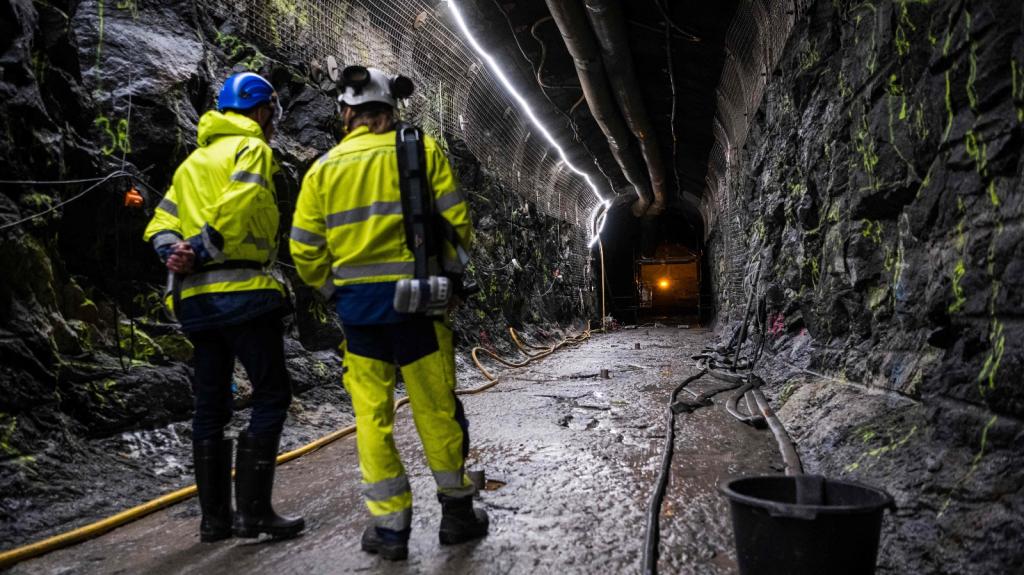As I wrote last week, the real winners in the ethanol boom aren’t corn growers or even ethanol makers (though the latter will do just fine). Rather, it’s the companies that make the inputs needed for growing vast quantities of corn.

Monsanto, the world’s dominant producer of genetically modified seed traits as well as the No. 1 herbicide maker, demonstrated that principle with its quarterly profit report last week. It harvested quarterly profits fully three times higher than it did a year earlier.
Mosaic, the No. 1 U.S. fertilizer maker, put that performance to shame. Mosaic is a spinoff of agribusiness powerhouse Cargill, which still owns a two-thirds stake in the company. Bolstered by the biggest corn crop in U.S. history, Mosaic saw its quarterly earnings rise nearly six-fold, Investors Business Daily reports — a 493 percent jump. And get this:
It was the third straight quarter of triple-digit growth, with analysts predicting at least two more.
Mosaic CEO (and former Cargill exec) Jim Prokopanko declared this period of profit growth “extraordinary.”
Wall Street, for its part, has been gobbling up Mosaic stock. A year ago, Mosaic shares fetched about $20. Today, they sell for around $90 — a phenomenal gain in tough year for the stock market.
If Mosaic has investors cheering, what should the rest of us think?
As I’ve written before, corn demands more nitrogen than any other U.S. crop — making it a major contributor to the “dead zone” that blooms annually in the Gulf of Mexico.
Corn is also our heaviest phosphate feeder. In the latest available numbers (Excel file) — before the massive ethanol-induced corn crop of 2007 — corn farmers were laying on about 1.7 million tons of phosphate every year. That’s more than the next-most phosphate-intensive crop (wheat) by a factor of three.
Not surprisingly, the ethanol boom has sparked a jump in phosphate prices.
According to the above-linked Investors Business Daily article, Mosaic saw the average selling price of a ton of its phosphate jump about 70 percent in the past year — a price increase of $174 per ton.
And that represents a massive windfall for Mosaic. IBD reports that Mosaic is “the world’s largest phosphate producer, producing roughly 11 million tons annually.” For those keeping score, 11 million tons times $174 equals $1.9 billion. Naturally, the bonanza is inspiring the company to expand and intensify its phosphate mining operations, which are concentrated in Florida.
But while Mosaic’s shareholders celebrate, citizens down in Florida have other concerns. Get this, from Tampa Bay-based Bay Soundings:
For every ton of raw fertilizer produced, the industry generates five tons of phosphogypsum, a radioactive material the U.S. Environmental Agency considers hazardous waste. With limited options available, the phosphate industry is storing more than a billion tons of phosphogypsum in stacks that tower up to 200 feet high — a problem that grows by 30 million tons every year.
Again, those massive mounds of phosphogypsum are slightly, well … radioactive. According to a report for the director of the Florida Institute of Phosphate Research — an industry-funded group — reprinted by the Sierra Club:
The impurities in phosphogypsum which cause the primary concern are radioactive materials. Uranium occurs naturally along with phosphate rock in Florida. Radioactive decay transforms uranium into other elements such as radium, polonium and lead. As a result, all of these radioactive materials are found in phosphogypsum.
Whoa. Maybe we should stop mining so much phosphate — say, by not subsidizing ethanol or overproducing corn? The guy from the the Florida Institute of Phosphate Research has a better idea. He wants to use those massive mounds of radioactive waste in highway construction, or even as a soil amendment. Weirdly, the Sierra Club seems to agree.
Phosphate mining causes other environmental devastation as well. “Phosphate mining disrupts water quality, soils, drainage patterns, and wetlands,” states the 1998 Water Resources Atlas of Florida.
And it uses massive quantities of water, draining aquifers nearby. According to an NYT report, a single phosphate mine pumps 100,000 gallons per minute.
How can all of this environmental destruction be legal and profitable for the company? Same old story: regulators allow the mining companies to “externalize” the damage they do, privatizing profit and socializing cost.
EPA oversight has been predictably abysmal. Evidently, the agency isn’t even enforcing its own lax rules. “We found out through consultants that none of the permits complied with the environmental regulations on the books,” one Florida county official who’s fighting a new mine told the Times. “We thought all these agencies were protecting us.”
At the state level, few major politicians have stood up for their citizens against the powerful phosphate industry. That may be because incestuous ties between Mosaic and state government.
Take Mark Kaplan. He served as former Gov. Jeb Bush’s last chief of staff in 2005, after leaving a “similar role for Lt. Gov. Toni Jennings.” Before that, he worked as “personnel director for [Jeb] Bush’s 2002-03 transition office and special counsel to the Florida House of Representatives.”
Today? Today Kaplan serves as vice-president in charge of government affairs for Mosaic and is a registered lobbyist (PDF) at he Florida statehouse. He’s tight with the new governor, too. Kaplan recently was named to the Governor’s Action Team on Energy and Climate Change.
Then there’s the case of Steven M. Seibert, a Florida lawyer who serves on Mosaic’s board of directors. Seibert has extensive background in state government, and once served the highest official in a county where Mosaic owns land and runs operations. Here’s his bio:
Prior to starting a law practice in 1999, Mr. Seibert was appointed by Gov. Jeb Bush as Secretary of the Florida Department of Community Affairs (DCA) where Mr. Seibert had primary responsibilities for Florida’s emergency preparedness and disaster response, community revitalization programs, and Florida’s extensive growth management system. As Secretary of the DCA, Mr. Seibert served on the Governor’s Growth Management Study Commission, the state’s Acquisition and Restoration Council, the Florida Housing Finance Corporation, as Chairman of the Florida Communities Trust and as Chairperson of the Wediva River Task Force. Prior to his appointment to the DCA, from 1992 to 1999 Mr. Seibert served as an elected County Commissioner representing Pinellas County, Florida.
In Pinellas County, Mosaic has been getting up to environmentally destructive activity involving deals cut with the County Commission, for which Seibert once served as chairman.


